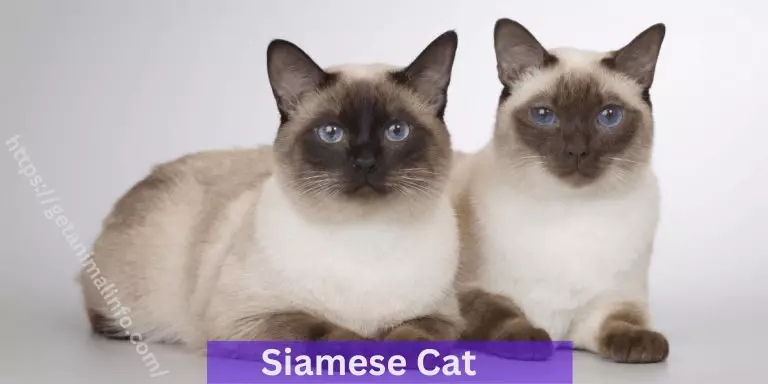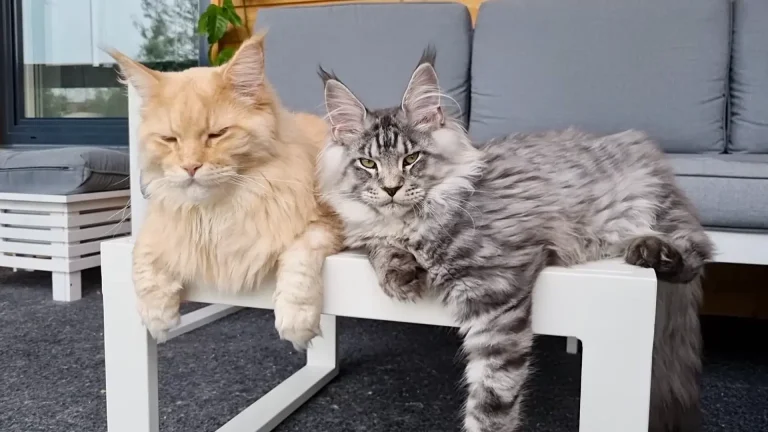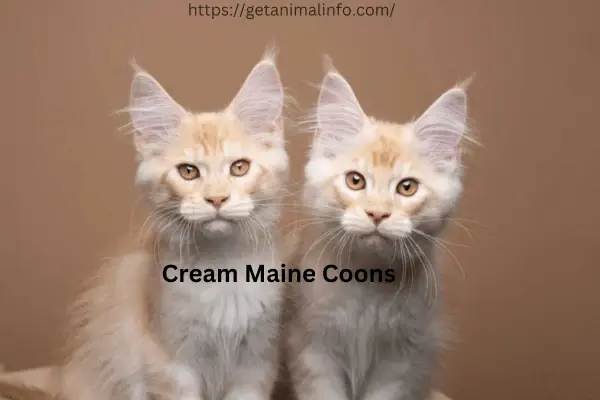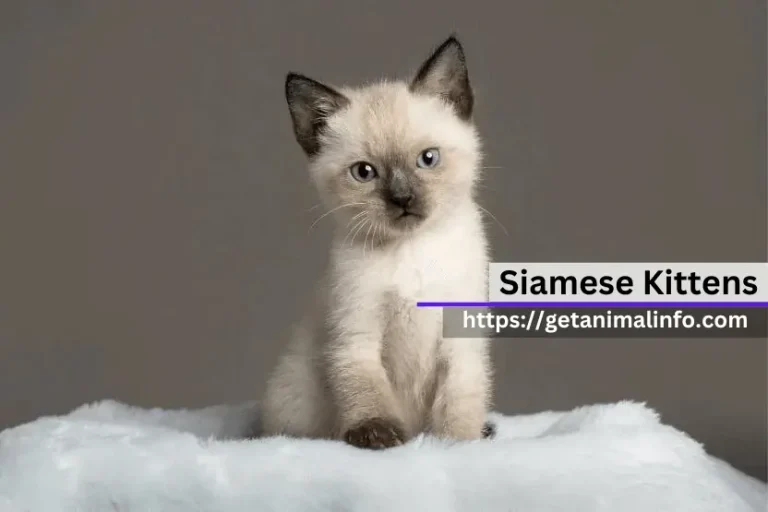Bengal Cats: Cute and Wild at Home
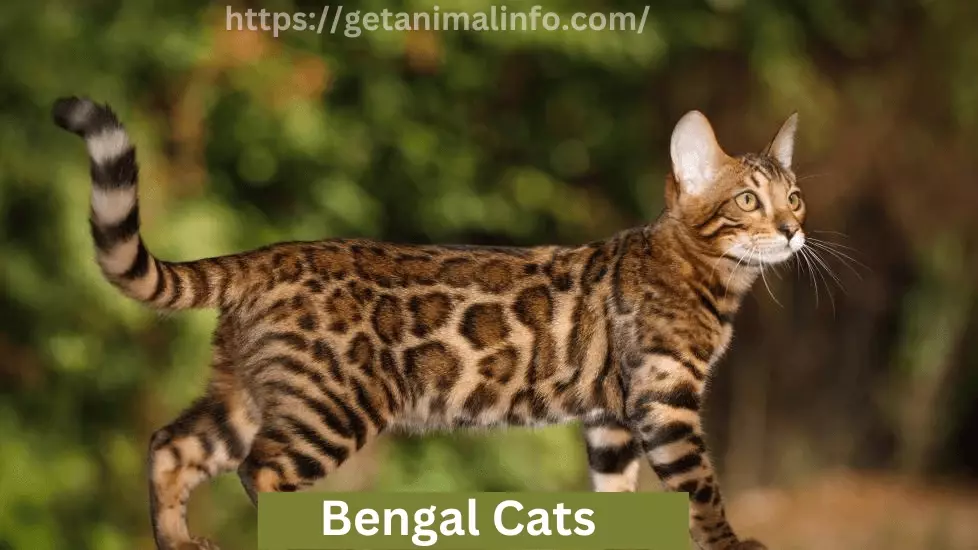
Bengal cats are a mix of regular house cats and wild Asian leopard cats, which are known by their scientific name, Prionailurus Bengalensis. They often have patterns similar to the spotted Egyptian Mau cat. Breeders usually match these cats with friendly house cats. This is done to make sure the kittens are nice and friendly, even though they are part wild cat. The name ‘Bengal’ comes from the leopard cat’s scientific name.
These cats have thick coats with large spots, making them look like wild cats. They are known for being energetic, clever, and fun-loving. Bengal cats are great friends for people because of their playful nature. They stand out because they look like they have leopard spots, and they have very lively and charming personalities.
General Information
Characteristics Overview
Personality Overview
Origin
The Bengal cat is a special type of cat that was first made in the United States in the 1960s. A cat breeder named Jean Sugden Mill mixed a regular house cat with a wild cat from Asia, called the Asian leopard cat. She wanted to make a new kind of cat that looked wild like the Asian leopard cat but was friendly like a house cat.
Bengal cats have a wild look. They have big spots or patterns on their fur, which makes them look like leopards. They are known for being very smart, full of energy, and loving to play. These cats are great for families who are active and like to play a lot. They are friendly and enjoy being around people. However, they are not the best choice for everyone because they need a lot of attention and playtime. Today, Bengal cats are very popular all over the world. They are known for their wild looks and playful personalities.
Population
The total number of Bengal cats in the world is not precisely known, as their population changes and depends on various factors like location and time. However, some experts have tried to estimate their numbers. According to these estimates, there are about 500,000 to 1,000,000 Bengal cats globally.
Bengal cats are one of the top 10 most popular cat breeds in the world. People are drawn to them for several reasons. One of their most appealing traits is their beauty – they have striking coats that resemble wild cats. Alongside their stunning appearance, Bengal cats are also known for their intelligence. They are smart and can be quite engaging with their owners. Additionally, their playful personalities make them a favorite among cat lovers. These characteristics combine to make Bengals highly sought-after pets, with many people eager to have one as part of their family.
Popularity:
Bengal cats are highly admired and popular all around the world. Known for their intelligence, striking appearance, and playful personality, they have captured the hearts of many cat lovers. Their breeding is relatively straightforward, which contributes to their increasing fame.
According to the Cat Fanciers’ Association, Bengal cats were ranked as the 5th most popular cat breed in the United States in 2022. This high ranking demonstrates their significant appeal among cat enthusiasts in the U.S. Other cat breed organizations place the Bengal in a slightly lower position, generally ranking them between the 8th and 12th most popular breeds. This still indicates a strong preference for Bengals among a broad range of cat owners.
Their popularity extends beyond the United States. Bengal cats are also favored in various other parts of the world, such as Asia, Australia, and Europe. Their unique looks, reminiscent of wild cats, along with their friendly and playful disposition, make them a sought-after breed in numerous countries.
Price
Bengal cats can be quite expensive, and their price varies based on several factors. The cost is influenced by the cat’s pedigree, age, and the reputation of the breeder. Typically, Bengal kittens are priced between $1,500 and $3,000. The most expensive Bengals are those with an outstanding pedigree and unique coat patterns. However, some Bengal cats with particularly rare coat colors or patterns can be much more expensive. In the United States, some of these rare Bengal cats can cost around $8,000 to $10,000.
When considering bringing a Bengal cat into your home, the purchase price is just the beginning. There are additional expenses to think about. These include veterinary care, vaccinations, grooming, and food. Additionally, a crucial expense to consider is pet insurance, which can help manage any unforeseen health issues or accidents.
The Bengal cat’s unique characteristics and popularity do come with a cost, but for many, the joy and companionship they provide are well worth the investment.
Characteristics:
Bengal cats look like little leopards and are a fun mix of wild and house cats. They have eye-catching spots and are playful. These cats like to meow a lot, play around, snuggle, and chat with their owners. They are very loving and, surprisingly, enjoy playing with water. Out of all the cat breeds, Bengal cats are super smart and have a strong desire to hunt. They need to be brushed every day to keep their fur nice and clean.
Lifespan:
Bengal cats usually live between 12 and 16 years. Taking good care of them, like exercising them every day, brushing their fur, and giving them healthy food, can help them live even longer. A few things that can change how long these cats live include their genes, where they live, and how much they move around. Giving them lots of love, attention, and fun activities can make them live happier and longer lives.
Size and Weight:
Bengal cats are usually medium to big. Their size and weight depend on their genes, health, what they eat, and how active they are. It’s important to feed them properly, play with them, and keep their minds busy. Cats that get lots of care and attention might grow faster than those that don’t. Here’s their average size:
Appearance:
Bengal cats look like they belong in the jungle. They have short fur with spots and swirls that shine in the light. Most are gray and brown with dark spots, but some have sparkly fur that twinkles. They are usually muscular and slim, which makes them look elegant.
They have markings around their eyes that look like eyeliner and eyeshadow, making them mysterious. Their big green or amber eyes shine brightly, showing their cleverness and playful side. People love them for their unique, wild look.
Temperament:
Bengal cats are like little jungle cats in your house. They are full of happiness, energy, and curiosity. They love to cuddle, explore, and play. These cats are very smart, and active, and can learn tricks easily. They are good at solving problems and need lots of love and attention. They enjoy being close to their owners and sitting on their laps. They have a personality similar to Maine Coon cats, known for being friendly and playful.
Colors & Pattern:
Bengal cats are known for their beautiful colors and patterns, which come mainly in two types: Spotted and Marble.
Spotted Pattern:
This is the most common pattern in Bengal cats. They have small to medium-sized spots all over their fur. The colors in this pattern include:
Marble Pattern:
This pattern comes from their wild Asian leopard cat ancestors. It’s getting more popular now. The Marble pattern looks like swirling or marbled colors on their coat. Common colors in this pattern are:
Other Patterns:
Apart from these recognized colors, Bengal cats can also be found in other colors and patterns that aren’t officially recognized by cat associations. These include:
Each Bengal cat, with its unique spots, colors, and sizes, looks different and adorable. These Wild-Looking house cats’ variety in appearance makes each one of them special and attractive.
Personality:
These little leopard-like Bengal cats are friendly, and smart, and make great pets. They are full of life, happy, and enjoy being around people. Bengal cats are perfect for those who can give them lots of time, love, and play. It’s important to train them and spend time with them, especially when they are young. This is the best time to teach them good behavior and kindness. Training them when they’re young makes your time together more enjoyable.
Intelligence:
Bengal cats are known for being very smart. They understand what you say quickly, so you can teach them fun tricks, like hide and seek. They learn new things and solve problems fast. They are curious and smart, which helps them get used to new places easily. They make different sounds to talk to their humans and other animals. They also have a natural skill for hunting, even when they are just playing.
Affectionate:
Bengal cats are usually very loving. They often form strong bonds with their owners and like to stay close to them. They are playful and have lots of energy. They love to follow their owners around the house. They show their affection by licking, head-rubbing, and purring. They like to sit on laps and sleep in bed with their owners.
Vocalization:
These cats are quite talkative. They make different sounds like meowing, chattering, and purring to communicate with their humans and other pets. These sounds can mean they’re hungry, feeling emotional, needing a bathroom break, or just showing love. They might get loud if they sense something wrong.
Behavior with Kids & Other Pets:
Bengal cats are gentle and kind with kids and other pets. They like to play and enjoy being around children and other animals. They are good at keeping busy with kids in games. They usually get along well with dogs and other cats, especially if they meet nicely the first time. They are friendly and social.
Dependency:
Bengal cats like being with their humans but also enjoy alone time. They can be independent when they want to. They’re happy around people, but they’re okay with being left alone too. They seek attention but also like their own space.
Hunting:
Bengal cats are natural hunters, more so than other cat breeds. They have a strong instinct to stalk and hunt. They love to chase toys, bugs, small objects, and feather wands. They are great hunters, being very alert, quick, and good at seeing and hearing. They quickly pounce on their targets.
Health issues
Bengal cats, known for their stunning appearance and playful nature, are generally a healthy breed. However, like all breeds, they may face certain health issues. Understanding these issues, their symptoms and possible treatments is essential for responsible pet ownership. Here’s a more detailed look at some common health problems in Bengal cats:
Pyruvate Kinase Deficiency (PKD):
Hip Dysplasia:
Hypertrophic Cardiomyopathy (HCM):
Patellar Luxation:
Progressive Retinal Atrophy (PRA):
Caring for Bengal Cats:
Bengal cats require attentive care, and it’s the responsibility of their owners to meet their needs and desires. Understanding their emotions and providing quality food, grooming, exercise, water, and entertainment is essential. Regular veterinary check-ups, ideally monthly, are also important.
Research:
Before adopting a Bengal cat, thorough research is crucial. Understand their dietary needs, the quantity of food required, and their favorite toys. Study their training, bathroom habits, and the best type of litter to use. Research necessary medications and vaccinations, and learn about their nature and how to train them properly, including teaching them good manners.
Quality Nutrition:
Bengal cats need a diet high in protein to support their high energy levels, health, and strong physical build. The diet should be rich in minerals and vitamins to aid in muscle tissue repair, building, and immunity. Consult a veterinarian before introducing medicated feed.
Grooming:
Regular grooming is crucial for Bengal cats. Their short fur should be brushed weekly using a comb or soft brush. Their nails need trimming weekly, and their ears should be cleaned weekly with a cotton bud or ball dipped in warm water or medicated pet ear cleaner. Bath them only as needed with mild shampoo and dry them with a towel.
Exercise:
Bengal cats are very active and need substantial physical activity. Around 30 minutes of exercise per day is recommended. Physical play is a good form of exercise, so provide a safe environment with toys and games to keep them active. Walks, puzzles, feather wands, balls, and a cat tree for climbing can help keep them engaged and fit.
Litter Box Care:
Choose a round-shaped litter box that is larger than the cat, allowing comfortable movement. Train your cat to use the litter box and place it in a comfortable location for them. Clean the litter box with water weekly and change the litter every one or two days, especially when it starts to smell.
Entertainment:
Bengal cats are naturally curious and enjoy exploring their environment. Provide a variety of toys such as puzzles, blocks, and tunnels to keep them engaged. They often enjoy water, so consider a pet fountain. Regularly teach them new tricks and engage in play. Games not only entertain them but also contribute to their health and activity levels.
Pros
Cons
FAQ
Conclusion
Bengal cats are a unique and enchanting breed, known for their striking appearance, high intelligence, and playful nature. They are sociable animals that often form strong bonds with their human families and can coexist well with children and other pets. While they are relatively low-maintenance in terms of grooming, their high energy levels require regular exercise and mental engagement. Prospective owners should be prepared for the financial commitment, as Bengals can be expensive to purchase and care for, and they should be aware of the breed’s potential health issues. Owning a Bengal cat can be a highly rewarding experience, offering the companionship of a pet with a truly unique personality and appearance.



